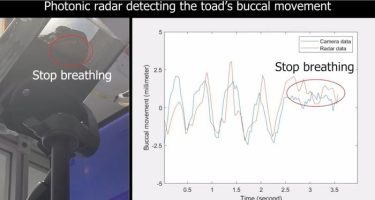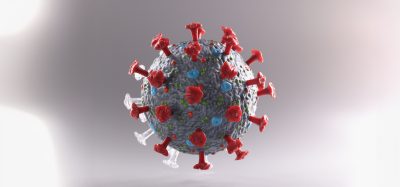Non-invasive photonic radar system enables precise health monitoring
Posted: 30 June 2023 | Izzy Wood (Drug Target Review) | No comments yet
Cane toad breathing monitored using ‘photonic radar’ at millimetre scale acts as proof of principle for human health detection in clinical environments


Constant monitoring of vital health signs is crucial in various clinical environments, ranging from intensive care units to aged care facilities and prisons. Traditionally, wired or invasive contact systems have been employed for this purpose, but they come with their own limitations. Recognising the need for a more convenient and non-invasive solution, scientists at the University of Sydney Nano Institute and the NSW Smart Sensing Network, Australia, have developed a groundbreaking photonic radar system capable of highly precise health monitoring. The research, published in Nature Photonics, showcases the potential of this innovative technology.
In their study, the researchers successfully utilised their newly developed radar system to remotely monitor breathing patterns in cane toads. They also tested the system on devices simulating human breathing, achieving accurate detection of breathing pauses. This proof of principle demonstrates the potential of photonic radar for monitoring the vital signs of multiple patients from a single centralised station, as stated by Professor Ben Eggleton, the lead researcher and Pro-Vice-Chancellor (Research) at the University of Sydney.
One significant advantage of this novel approach is the ability to detect vital signs without physical contact, enhancing patient comfort and reducing the risk of cross-contamination—an essential aspect in infection control. The photonic radar system utilises light-based photonics instead of traditional electronics to generate, collect, and process radar signals. This approach enables wideband generation of radio frequency (RF) signals, facilitating highly accurate and simultaneous tracking of multiple subjects.
By combining this photonics approach with LiDAR (light detection and ranging), the researchers achieved a vital sign detection system with a remarkable resolution of six millimeters and micrometer-level accuracy. This level of precision is suitable for clinical environments, according to Ziqian Zhang, lead author of the study and a PhD student in the School of Physics at the University of Sydney.


Experimental setup monitoring cane toad breathing in the photonic labs of the University of Sydney Nano Institute. Scientists used a new ‘photonic radar’ to create high-definition radar to accurately monitor cane toad vital signs.
(Credit: The University of Sydney)
Compared to alternative non-contact monitoring methods that rely on optical sensors with infrared and visible wavelength cameras, the photonic radar system offers distinct advantages. Camera-based systems often suffer from sensitivity to lighting conditions and variations in skin color, as well as privacy concerns related to high-resolution image storage. In contrast, the RF detection technology employed by the photonic radar system allows for remote monitoring of vital signs without visual recording, ensuring built-in privacy protection and eliminating the need for cloud storage of sensitive information.
Moreover, the researchers emphasised the complementary nature of their system, which combines radar and LiDAR detection. This redundancy ensures continuous functionality even if one of the systems encounters a fault. While conventional RF radar systems have limited range resolution, the integration of LiDAR in the photonic radar system provides improved range and resolution. By leveraging both photonic and RF technologies, the proposed system maximises their utility and potential.
Looking ahead, the research team, in collaboration with partners from the NSW Smart Sensing Network, aims to develop a cost-effective, high-resolution, and rapid-response vital sign monitoring system suitable for use in hospitals and corrective services. The next step involves miniaturising the system and integrating it into photonic chips that could be incorporated into handheld devices, facilitating widespread adoption and accessibility.
The development of this non-invasive photonic radar system marks a significant milestone in health monitoring technology. With its potential to revolutionise vital sign monitoring in various clinical settings, this groundbreaking research has the potential to improve patient care, comfort, and safety, while also addressing privacy and cross-contamination concerns associated with traditional monitoring methods.
Related topics
Animal Models, Imaging, Technology
Related organisations
Sydney University
Related people
Professor Ben Eggleton, Ziqian Zhang







